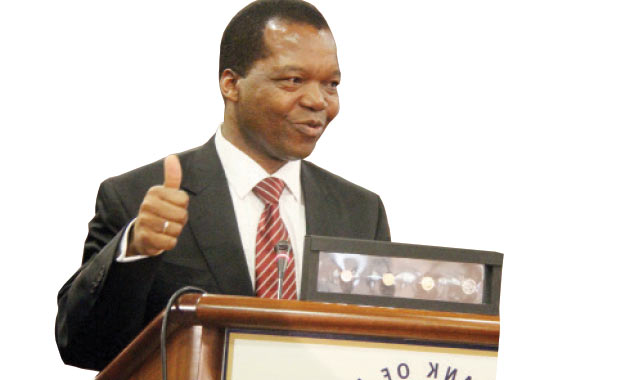Mangudya proposes flat tax

RESERVE Bank of Zimbabwe governor Dr John Mangudya says Zimbabwe should seriously consider introducing a flat tax as a measure to clog the huge tax gap in the informal sector.
The local informal sector generally accounts for around 70 percent of the country’s economic activity, but the sector is notorious for tax avoidance.
Dr Mangudya said a flat tax would effectively broaden the country’s tax base and hence expand the gross domestic product (GDP).
“If the Zimbabwean economy is 70 percent or 80 percent dominated by the informal sector, it means we need a tax that talks to the informal sector.
“Maybe we now need a flat tax for everyone who is in business in terms of the informal sector. Maybe $10 or $20 per month,” he said.
He was speaking during the launch of the Confederation of Zimbabwe Industries (CZI) Manufacturing Sector Survey 2016 report.
A flat tax is basically a system that applies the same tax rate to every taxpayer regardless of income bracket.
Currently, the Zimbabwe Revenue Authority (Zimra) imposes a presumptive tax on selected sectors of informal businesses, namely transport operators, hairdressing saloon operators, informal traders, small-scale miners, cross-border traders, operators of restaurants and bottle-stores, cottage industry operators and commercial waterborne vessels.
Although presumptive tax legislation was introduced to broaden the revenue base in view of the increase in informal business activities, the scale and diversity of SMEs has expanded significantly in recent times.
The RBZ governor said the fact that most SMEs were not paying tax meant that the country’s GDP might actually be understated.
“Our GDP might not be as low as the ZimStats figures indicate today. I do believe that Zimbabwe’s GDP is higher than that, because if you have 70 percent of economic players (the SMEs) not paying tax and 30 percent are paying taxation and they are bringing about $4 billion,” he said.
Analysts who spoke to BH24 contend with Dr Mangudya’s assertions on the country’s GDP level.
They say that Zimbabwe’s GDP could be understated judging from the revenue buoyancy that can be inferred from current GDP figures.
Revenue buoyancy is the ratio of revenue to GDP. Projecting on current GDP levels, they say Zimbabwe has a revenue buoyancy of just over 30 percent, which they contend is a bit too steep for a highly informalised economy. – BH24









Comments